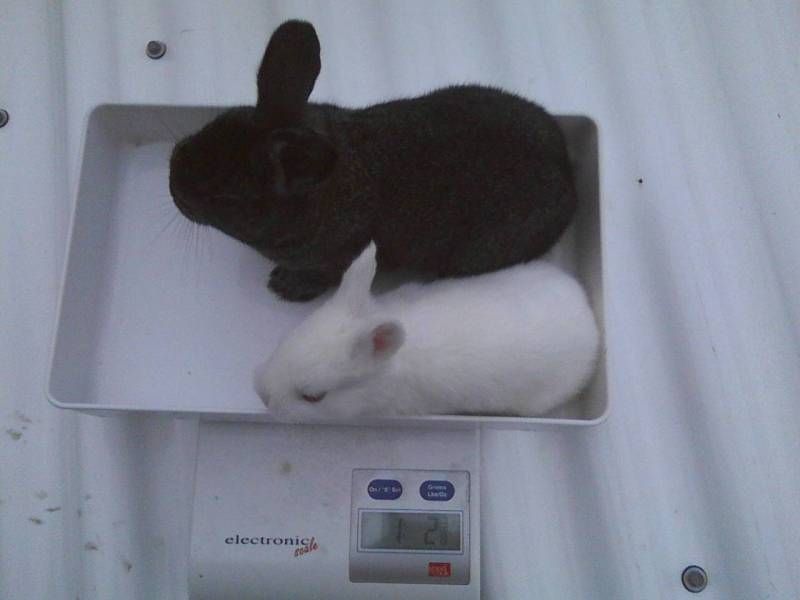May 7, 2012
Litter size matters
Two kits from different litters, different mothers, same father. Both are the average size of their litter; they're not the largest nor are they the smallest of their litter.
You'd think there was a significant age difference. Having watched three litters grow, I would guess that they are at least a week if not two weeks apart in age.
They are four days apart. Four days. Stunning.
What makes the difference? Litter size and how the mother feeds them, but in this case, mostly litter size.
The top kit is from Rosebud who had six kits. The bottom kit is from Matilda who had ten kits. Just like in humans, the more babies in the womb, the less room to grow en utero and the smaller they are at birth. And when you have ten babies and only eight nipples, there's not as much milk to go around which makes it take longer to grow.
It definitely appears that Rosebud's litter will reach butchering weight much sooner than Matilda's litter. The lesson learned here is that when you have a large litter, always foster a few of the kits out to another doe who has a smaller litter. There's a solid three and a half ounce difference between these bunnies. That is a significant weight difference for kits so close in age. Developmentally, Rosebud's litter is already leaving the hutch on their own, eating grass with their mother, eating pellets and sunflower seeds and even drinking from the nipple waterer. Matilda's litter might eat some grass if I put it in the hutch for them. That's it.
We'll see if Matilda continues to produce small kit size or if it was a one time occurrence due to the size of the litter.
While having a larger litter is nice, it also has its concessions. We need our rabbits to get to weight as quickly as possible.
Subscribe to:
Post Comments (Atom)

No comments:
Post a Comment